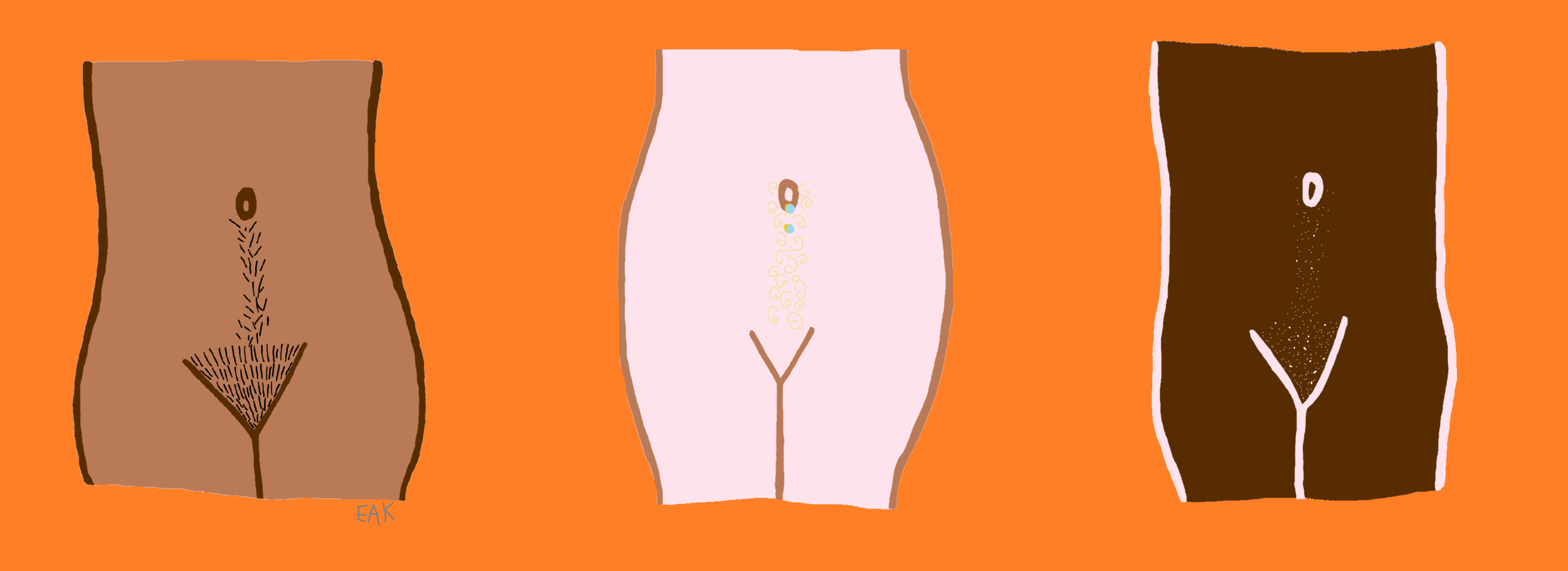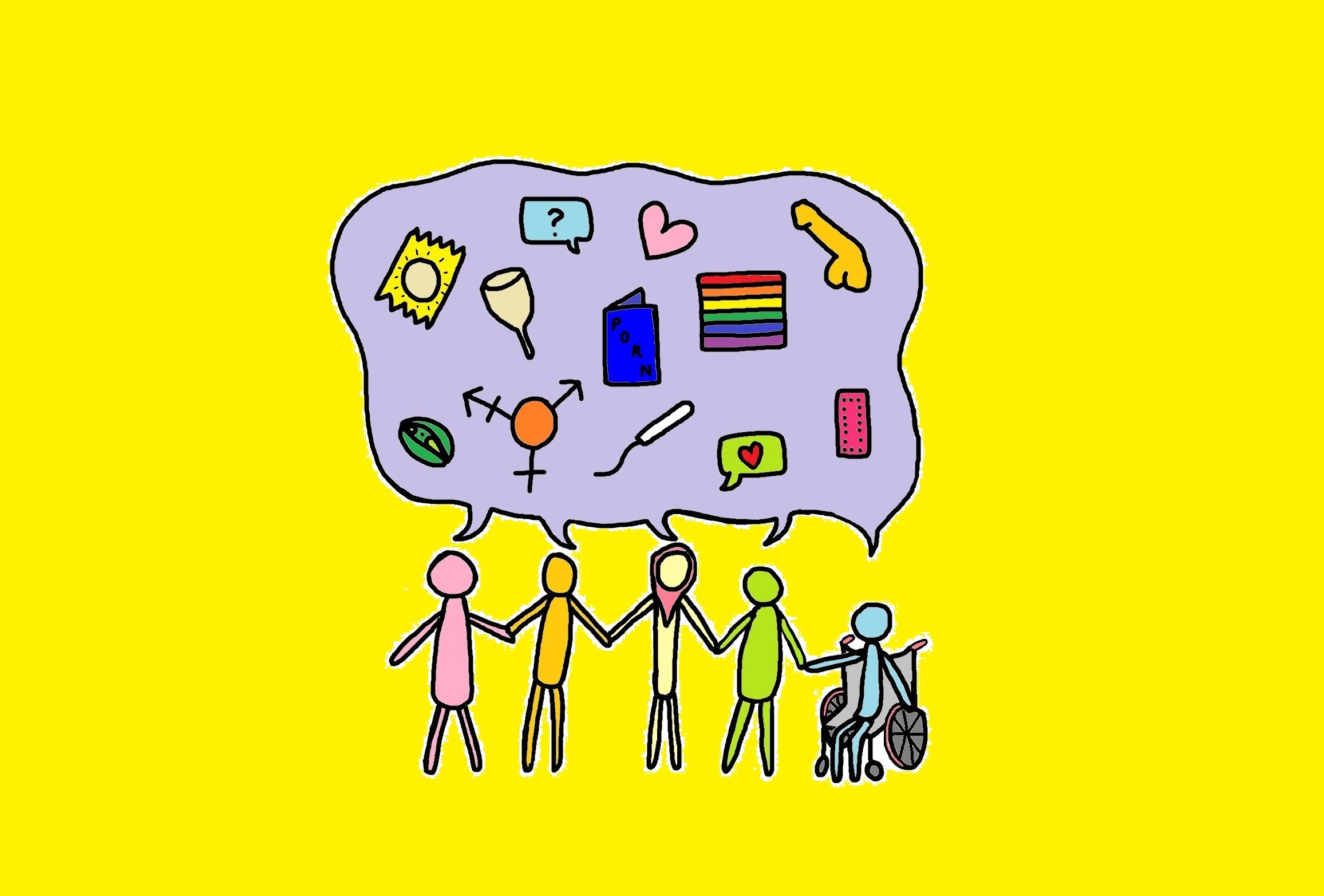ESCRITO POR UNA DE LAS INTEGRANTES DEL BRILLANTE GRUPO ASESOR DE JÓVENES DE SCHOOL OF SEXUALITY EDUCATION
Jazmín, 18 años, Argentina
English version available here.
Siendo el show más visto de Netflix, Bridgerton demostró cómo la cultura patriarcal ha afectado todos los aspectos de nuestras vidas desde el principio de los tiempos. En este artículo, voy a analizar y destacar algunos de los conflictos que el show aborda.
Basado en la novela de Julia Quinn's, este drama está ambientado en la alta sociedad de Londres en el periodo Regencia, durante la temporada social, donde las debutantes hacen su entrada dentro del “mercado matrimonial”, como Lady Whistledown, la narradora de la serie, lo llama.
“Mercado matrimonial” puede no hacer sentido cuando pensamos en casarnos, sin embargo, algunas de sus características han sido preservadas hasta nuestro presente, como voy a explicar.
ROLES DE GÉNERO
En el primer episodio, las debutantes son presentadas ante la reina, quien las juzga en base a su apariencia. Este hecho significa todo para estas jóvenes, hasta el punto donde una de ellas se desmaya debido a su ajustado corsé. Esto puede parecer una exageración, pero es cierto que, incluso hoy en día, muchas mujeres, en especial las adolescentes, sufren de trastornos alimenticios a causa de los estereotipos que imponen que ser más delgada es ser más bonita.
Mientras el episodio continúa, Daphne, el personaje principal, tiene que obedecer a su hermano mayor sólo porque es “el hombre de la casa”. Por esta razón, no puede bailar con nadie, incluso si así lo desea. De acuerdo con su hermano, debe dejar a los hombres “queriendo más”, de otra forma, sería vista como una mujer sinvergüenza que lleva una vida sexual activa. Este juicio sigue sucediendo diariamente, categorizando a las mujeres que viven con libertad como de menor valor que aquellas que se conforman con las normas.
Algo similar ocurre cuando Daphne y el Duque de Hastings, su futuro marido, se besan en el jardín antes de casarse. Anthony, su hermano mayor, lxs encuentra y, en consecuencia, debe traer el honor de nuevo a su familia, convirtiendo a Daphne en la víctima y la culpable al mismo tiempo. Es categorizada como una puta y una niña, incapaz de valerse por sí misma. Al mismo tiempo, un hombre tiene que tomar responsabilidad por ello, demostrando lo que “ser un hombre” significa.
Daphne: “¿Crees que sólo por ser mujer soy incapaz de tomar mis propias decisiones?”, “¿Te importa que Simon me haya deshonrado, como dices, o es tu orgullo de hombre el que quieres satisfacer?”
Este rol de género parece afectar no sólo a Anthony, sino también al Duque, cuyo deber como hombre fue determinado desde el día en el que nació, siendo tan sólo un bebé, lo cual parece ser algo moderno. Incluso antes de nacer, las personas comienzan a asumir gustos y comportamientos que lx recién nacidx debería tener acorde a su sexo asignado en el nacimiento. Si es una mujer, entonces deberá de gustarle el rosa y deberá ser amorosa, respetuosa, encantadora y bondadosa. Si es un hombre, entonces deberá de gustarle el azul y deberá ser valiente, disciplinado, impasible y bondadoso, pero no de la misma manera en la que las mujeres lo son, sino que tienen que ser dominantes.
Esto ocurre en otra conversación, cuando Anthony le ofrece el dote de Daphne, el cual se rehúsa a aceptar, afirmando que “Su bienestar es mi responsabilidad ahora”. Esto no sólo significa una enorme responsabilidad para Simon, el Duque, sino que también sentencia a Daphne a una vida de obediencia, reflejando los estereotipos ilustrados en el párrafo anterior.
FEMINISMO
En los ocho capítulos, diversos pensamientos revolucionarios son ilustrados. Todas las mujeres en la serie reconocen que hay una diferencia entre el poder que las mujeres y los hombres tienen. Siendo conscientes de ello, son capaces de volcar los estereotipos a su favor. Divulgan un rumor para evadir el matrimonio de Daphne con alguien con quien ella no se quiere casar.
Daphne: “¿Quién les creerá a unas mujeres contra la palabra de un hombre?”
Violeta, madre de Daphne: “Pero lo creerán si Lady Whistledown nos cree. Así que haremos lo que las mujeres hacen. Hablaremos.”
Incluso si esto puede posicionar a Lady Whistledown como la voz más poderosa, Eloise, la hermana menor de Daphne, remarca que “Whistledown es mujer. Por lo tanto, no tiene nada. Tu eres hombre. Por lo tanto, lo tienes todo.”
Eloise es el personaje más controversial del drama. Es abierta respecto a sus ideas y no está asustada de expresar su enojo hacia la cultura patriarcal. Explora las bases del patriarcado y los detalles más complejos que oprimen a las mujeres. Al principio, sólo está preocupada por su futuro, “¿Por qué nuestras únicas opciones son graznar y casarse o no abandonar el nido?, ¿Qué tal si yo quiero volar?”, “¿Te digo lo que sí es un logro? ¡Asistir a la universidad! Si fuera hombre yo podría hacer eso.”
Luego, comienza a preocuparse por otras mujeres que conoce como, por ejemplo, la sirvienta de Penélope, quien está embarazada y soltera, pero planea escaparse con el padre del bebé, lo cual únicamente incrementa la preocupación de Eloise: “Son suficientes razones para tener miedo. Cuando se case su vida terminará. Eso no es un escape Penélope.”
Finalmente, es capaz de expresar sus ideas contra el patriarcado cuando conversa sobre una pintura con Penélope, demostrando que todas las mujeres parecen ser afectadas por el machismo, y no sólo ella. “Es porque estas pinturas fueron hechas por hombres que ven a las mujeres como objetos decorativos.”
A su vez, muestra rechazo al pensar en el estilo de vida de su hermana mayor, y no duda en cuestionarla, “Daphne tal vez esté enamorada, ¿Cree que eso es un logro?, ¿Qué es lo que ha logrado? No horneó a ese hombre, ni lo fabricó, simplemente apareció.”
Daphne, al contrario, no es tan determinada como Eloise, pero frecuentemente muestra cansancio.
Daphne: “No tienes idea de lo que es ser mujer", "Esto es para lo que fui educada, […] No tengo otro valor.”
Estas líneas muestran cómo realmente se siente sobre la presión de casarse y de ser madre, incluso si eso es lo que desea. Definitivamente, esta es una presión que muchas mujeres sienten, especialmente cuando deciden que no quieren ejercer la maternidad. Incluso si nadie las juzga directamente, lo cual es casi imposible, deben de lidiar con la misoginia internalizada, la cual las hace sentir indignas e incompletas.
FALTA DE INFORMACIÓN
Es claro que hoy en día contamos con más información sexual y otras cuestiones relacionadas ya no son tabú, pero el misterio innecesario alrededor de este tema sigue siendo parte de nuestra sociedad.
Desde el segundo episodio podemos ver a lxs personajes siendo curiosxs respecto a cosas que pueden parecernos obvias, tales como de qué manera ocurre la concepción. Eloise, siendo una adolescente, no cuenta con esta información, “¿Cómo es que una mujer queda en cinta?” Ni siquiera Daphne, quién ya está casada, “Si es tan difícil decirlo, ¿Qué tan difícil va a ser llevarlo a cabo?” En ambos casos, se sienten asustadas, debido a la posibilidad de quedar embarazadas antes del matrimonio o por lo que el “acto marital” es.
Para estas hermanas no hay respuestas claras, lo cual incrementa su confusión y juega un papel fundamental en el show. Por ejemplo, cuando los hermanos de Eloise intentan explicarle, su madre se rehúsa, “Espero que ustedes dos no alienten temas impropios en la conversación.” Mientras esto puede parecer lejano a nuestra realidad, el sexo es frecuentemente explicado con metáforas a personas que cuentan con la capacidad de entender. Esto se añade al hecho de que el sexo es, la mayoría de las veces, explicado desde un punto de vista heteronormativo, lo cual incrementa la confusión y el miedo, sentimientos que debían haber sido dejados atrás hace décadas.
AGRESIÓN SEXUAL
La mayoría de lxs espectadores de Bridgerton se dieron cuenta de que hay una escena dónde Daphne es acosada por un hombre. Ella estaba en el jardín sola cuando este hombre apareció y comenzó a acercarse, tratando de besarla y tocarla. Afortunadamente, después de decir “basta” repetidas veces, logra escapar.
Desafortunadamente, esto sigue sucediendo. De hecho, el 78% de mujeres han experimentado abuso en un lugar público1. El mismo sentimiento de culpa que Daphne tuvo, se replica en cada víctima. Al mismo tiempo, se siente aterrada de que alguien lo sepa, porque sería un escándalo para ella. Esto está sucediendo ahora, todos los días, cuando estos crímenes se hacen públicos surgen preguntas como: “¿Por qué estaba sola de noche, vestida así?, ¿Qué hizo para provocarlo?, ¿Por qué no se defendió?”, culpando a la víctima.
Daphne: “Y yo estoy sola, con dos hombres. […] Quedaré comprometida de cualquier forma. ¿Tiene idea de que pasaría si alguien llegara a sugerir que yo…?”
Finalmente, hay otra escena que muestra una agresión sexual. Cuando Daphne descubre cómo tener sexo para quedar embarazada, fuerza a Simon a eyacular dentro de ella, cuando, claramente, él no quiere.
Puede ser sorpresivo el darse cuenta que esto está categorizado como una agresión sexual, a causa de que Daphne es vulnerable durante todo el show y los hombres siendo las víctimas no es algo que sea comúnmente conversado, muchas veces frases como “Los hombres siempre quieren tener sexo”, “Fue muy afortunado, si fuera yo no me quejaría” son dichas, estableciendo que ser violado o abusado siendo hombre es algo de lo que estar orgulloso, sin ningún otro sentimiento que puede ser negativo siendo involucrado.
Además, la mayoría de personas no se imaginarían a Daphne como una agresora. La imagen estereotípica de como unx agresorx debería verse sigue afectando la forma en
que las víctimas de cualquier tipo de violencia sexual pueden contar lo que sucedió. Esto también afecta la fiabilidad del testimonio que las víctimas pueden dar sobre la agresión que sufrieron.
Bridgerton es perfecta para discutir asuntos relacionados con el sexo, el género, la salud física y mental. Considero que los roles de género, el feminismo, la falta de información referida al sexo y las agresiones sexuales son los temas más impactantes e interesantes. El creador, Chris Van Dusen, y la productora, Shonda Rhimes, lograron mostrar conflictos que usualmente son escondidos, pero también fueron capaces de poner en discusión problemas actuales, trabajando con una novela basada en 1813. Finalmente, estoy emocionada por ver qué otras situaciones remarcables sucederán en la próxima temporada y, sobre todo, estoy especialmente interesada en observar cómo los personajes femeninos cuestionan, incluso más, las estructuras patriarcales.
Our book ‘Sex Ed: An Inclusive Teenage Guide to Sex and Relationships’ is out now.








